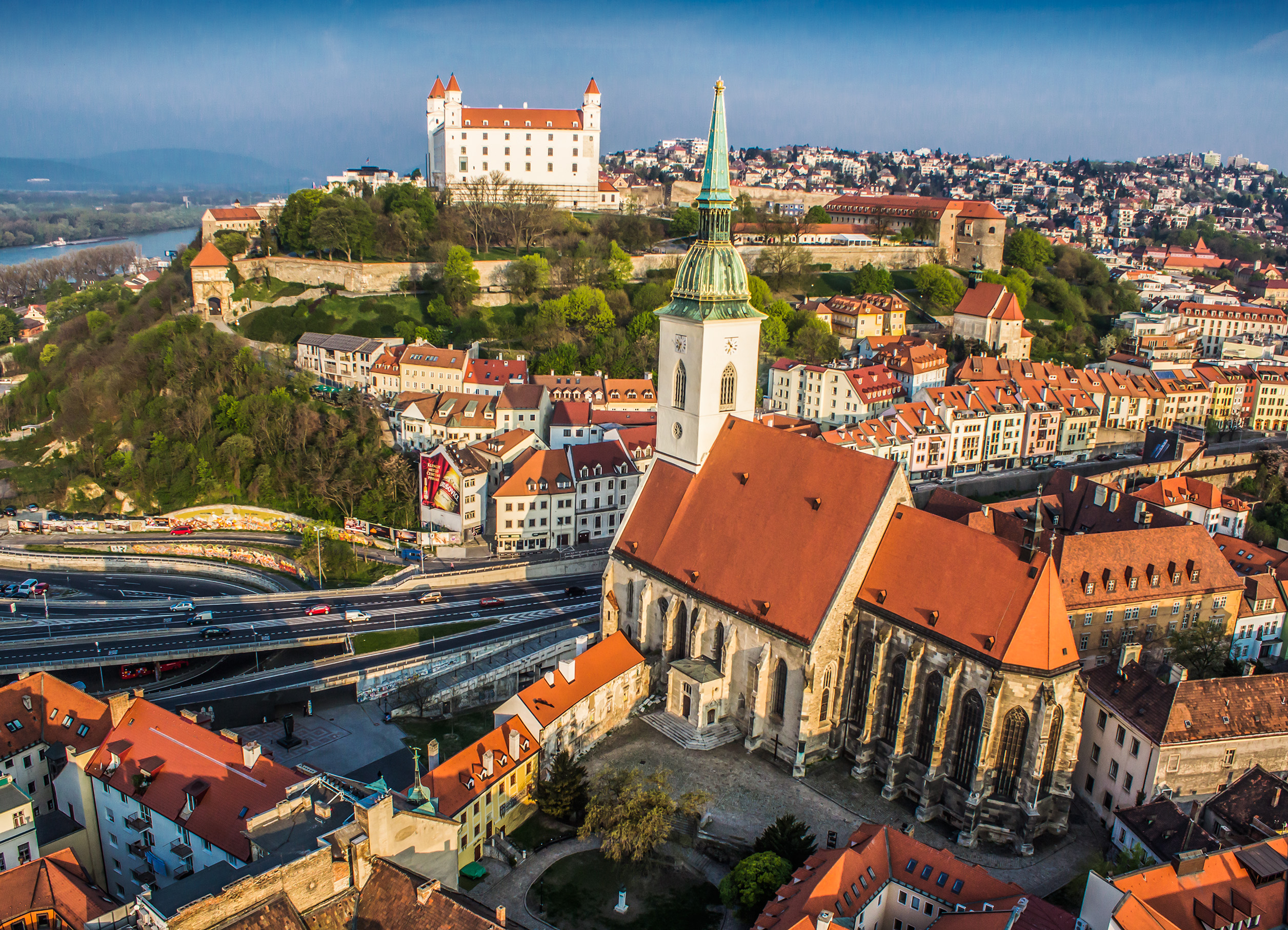
Located on the Danube River, reachable within a day from Vienna and Budapest, I found Bratislava to be the biggest hidden gem on my trip to the former Eastern Bloc.
Packed full of history and less frequented by tourists, the capital of Slovakia allows you to have a certain intimacy with the city and its culture that you can’t find elsewhere.
Bratislava, a Hidden Gem in Europe for History Lovers
Straddled by Austria and Hungary, Bratislava is the only national capital in the world that is bordered by two countries. The history of the Solvak people is a history of oppression and external control. From 1000-1918 A.D., the land was part of the Austro-Hungarian Empire. Following World War I, Slovakia along with the modern day Czech Republic united as Czechoslavakia. In 1939 this came to an end as Germany took control and set up a puppet government. With the collapse of Germany, the Soviet Union liberated Slovakia and began Communist rule. Communist rule ended in 1989 with the fall of the iron curtain and Slovakia has been the nation it is today since 1993.
One of the reasons Bratislava does not have as big of a reputation for tourism as its neighbors Prague or Vienna is because its historical center is considerably smaller than those cities. It was under the Soviets that the most destruction to Bratislava’s cultural sights occurred.
In an attempt to modernize the city, under Soviet Rule, 30 percent of the Old Town was destroyed.
Today this destruction mean the Old Town can at times have a slightly awkward feel as a large highway cuts through the historic center running past Bratislava Castle, and Communist-era uniform buildings dot the skyline. But it doesn’t mean there’s a lack of sights to see.
A guided walking tour is an absolute must on a visit to Bratislava. I took a free tour with Be Free Tours, and plenty of similar operators abound in the city. Not only did the tour lead me to key sights, it also discussed the history of Bratislava and the Communist-era in a candid and refreshing manner. Authentic Slovakia also offers historic tours in a vintage car.
The Main square of Bratislava is Hlavné námestie, dominated by Stará radnica, or the Old City Hall. Dating back to the 13th century, this is one of the oldest preserved buildings in the city and today is home to museums on city history and culture.
 Be sure to stop in Schokocafe Maximilian for their specialty hot chocolate and an excellent view of the square.
Be sure to stop in Schokocafe Maximilian for their specialty hot chocolate and an excellent view of the square.
A short stroll away is Hviezdoslavovo námestie , home to the Slovak National Theater and US Embassy. Long an important location for the masses to gather, the square caught US attention in 2005 when President Geroge W. Bush gave a speech here.
Note: if you want to make friendly with the locals don’t follow in Bush’s footsteps and mistake Slovakia for Slovenia.
The largest church in the city is St. Martin’s Cathedral. Within these 13th century walls, coronation ceremonies were held for 19 monarchs of the Hungarian Kingdom.
However, arguably the most interesting church in the city is the Church of St. Elizabeth. Dubbed the blue church, this building is a feast for the eyes. Representative of the Hungarian Art Nouveau style, it is reminiscent of works found in Barcelona by Gaudi.
High above the city center sits Bratislava Castle. Rebuilt in the 18th Century under the rule of Maria Theresa, the Castle has been reconstructed and refurbished to look as it did then, during the castle’s golden age.
From Bratislava Castle there is an unobstructed view of the Danube River. The most notable sight in the skyline is the New Bridge, built between 1967-72 under Communist rule and topped by a pod that resembles a flying saucer. This unique architecture has led it to be known as the UFO Bridge.
From this vista there are also good views of the block or Panelák apartment buildings created during Soviet rule.
I found Bratislava to be one of the most eye-opening cities I visited during my travels throughout Europe. Do yourself a favor and visit, taking advantage of a walking tour to maximize your knowledge gained from this rewarding destination.
Sorry, the comment form is closed at this time.


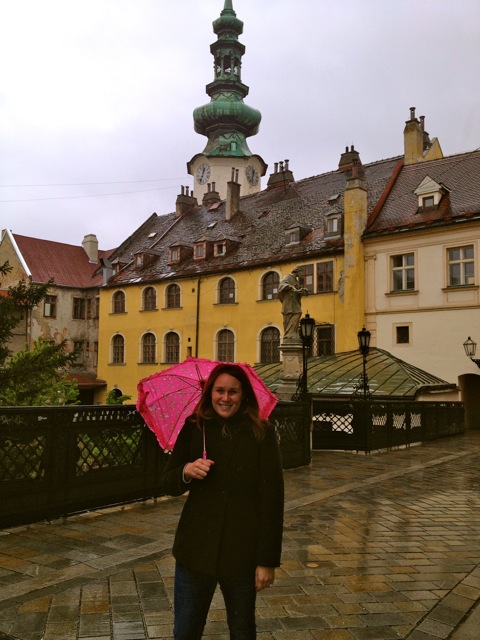
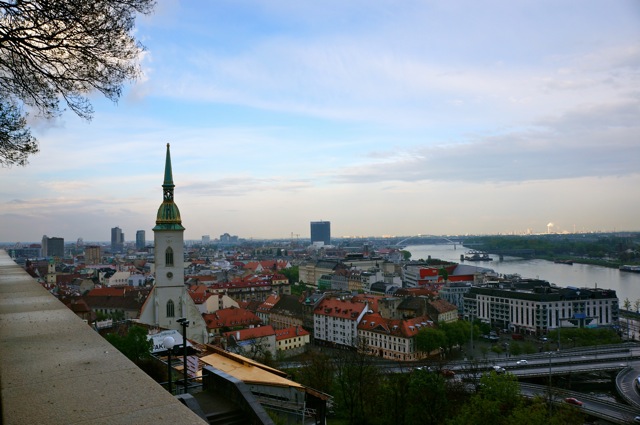

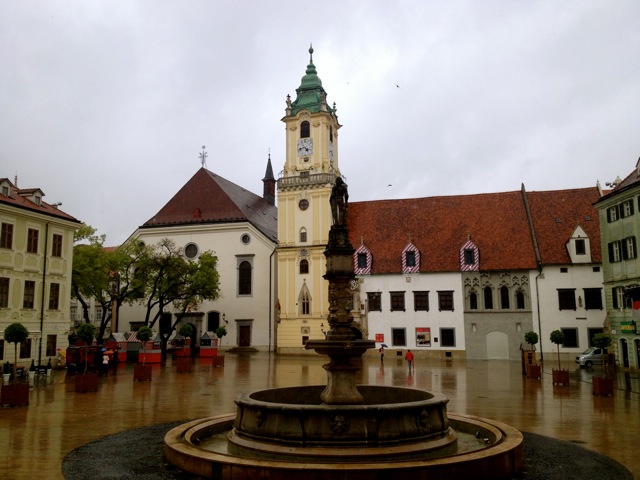
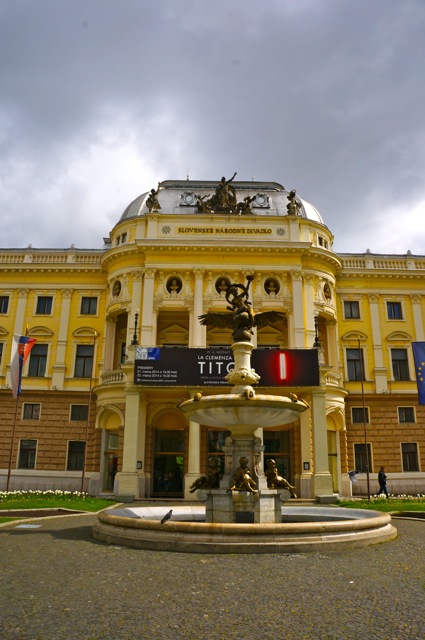
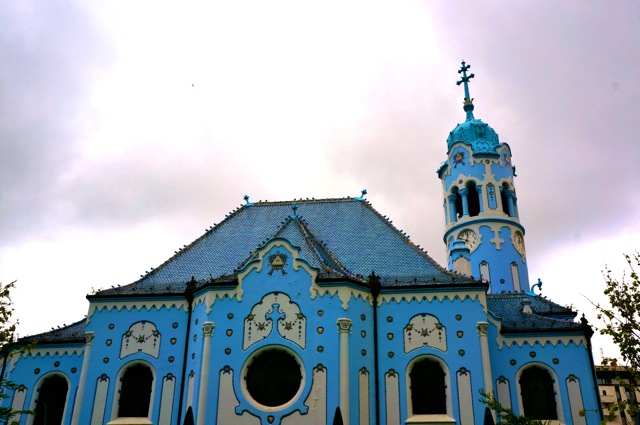

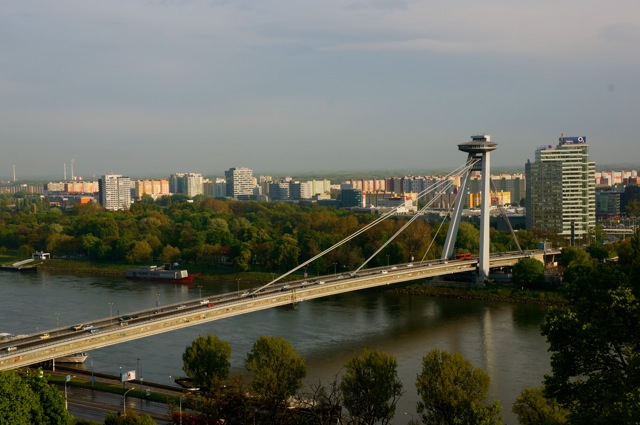



Pingback: Drive through the sights and history of Authentic Slovakia in a retro car | Something In Her Ramblings
Jan
Nice article, cheers from Bratislava 🙂
Lauren
Thanks Jan! I really enjoyed my time in Bratislava. I learned SO MUCH!
luigi
I wonder what kind of oppression did Slovaks suffer during those centuries. Other nations simply vanished or melted into others now look at Slovaks there are 5 million today. A nation born within the Kindom of Hungary and a country made by foreigners, no offense though. But you won’t find anything else in the libraries about Slovaks. Their “wish for freedom” was a 19th-20th century project.
Lauren
A fascinating topic!